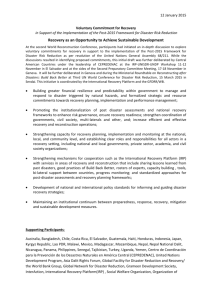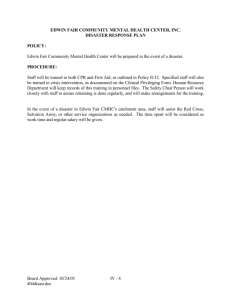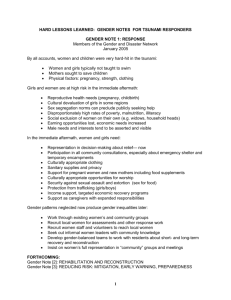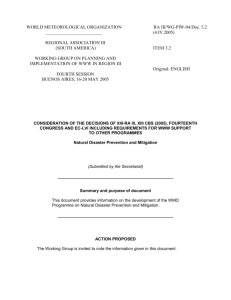What negative or positive intervention means and in case of
advertisement
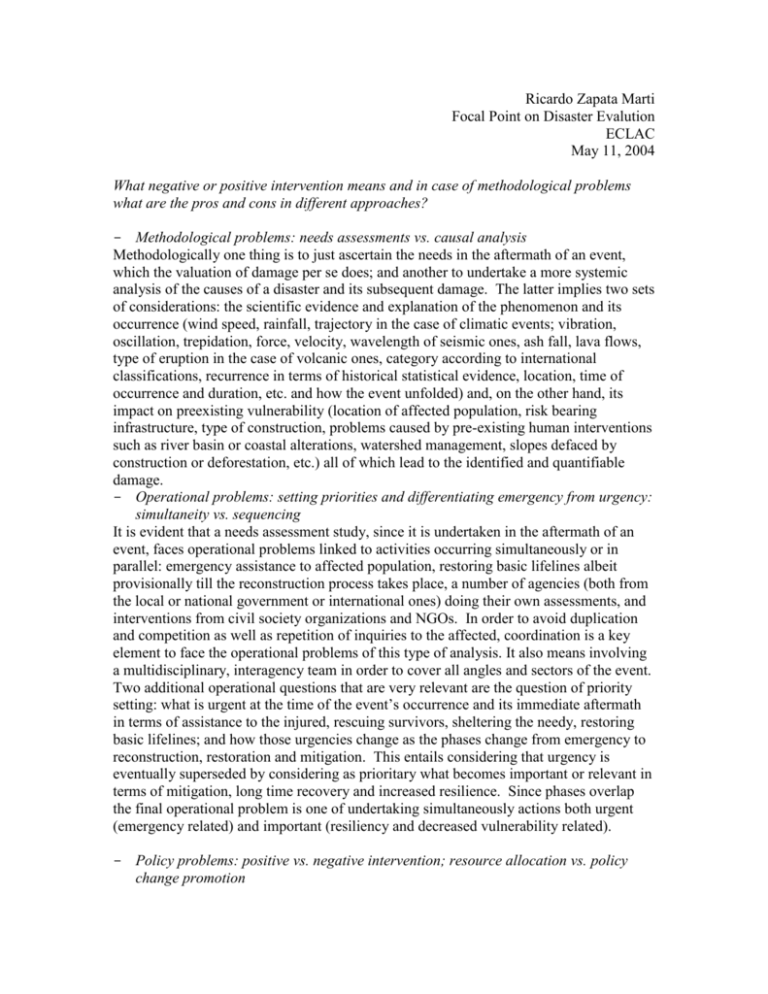
Ricardo Zapata Marti Focal Point on Disaster Evalution ECLAC May 11, 2004 What negative or positive intervention means and in case of methodological problems what are the pros and cons in different approaches? - Methodological problems: needs assessments vs. causal analysis Methodologically one thing is to just ascertain the needs in the aftermath of an event, which the valuation of damage per se does; and another to undertake a more systemic analysis of the causes of a disaster and its subsequent damage. The latter implies two sets of considerations: the scientific evidence and explanation of the phenomenon and its occurrence (wind speed, rainfall, trajectory in the case of climatic events; vibration, oscillation, trepidation, force, velocity, wavelength of seismic ones, ash fall, lava flows, type of eruption in the case of volcanic ones, category according to international classifications, recurrence in terms of historical statistical evidence, location, time of occurrence and duration, etc. and how the event unfolded) and, on the other hand, its impact on preexisting vulnerability (location of affected population, risk bearing infrastructure, type of construction, problems caused by pre-existing human interventions such as river basin or coastal alterations, watershed management, slopes defaced by construction or deforestation, etc.) all of which lead to the identified and quantifiable damage. - Operational problems: setting priorities and differentiating emergency from urgency: simultaneity vs. sequencing It is evident that a needs assessment study, since it is undertaken in the aftermath of an event, faces operational problems linked to activities occurring simultaneously or in parallel: emergency assistance to affected population, restoring basic lifelines albeit provisionally till the reconstruction process takes place, a number of agencies (both from the local or national government or international ones) doing their own assessments, and interventions from civil society organizations and NGOs. In order to avoid duplication and competition as well as repetition of inquiries to the affected, coordination is a key element to face the operational problems of this type of analysis. It also means involving a multidisciplinary, interagency team in order to cover all angles and sectors of the event. Two additional operational questions that are very relevant are the question of priority setting: what is urgent at the time of the event’s occurrence and its immediate aftermath in terms of assistance to the injured, rescuing survivors, sheltering the needy, restoring basic lifelines; and how those urgencies change as the phases change from emergency to reconstruction, restoration and mitigation. This entails considering that urgency is eventually superseded by considering as prioritary what becomes important or relevant in terms of mitigation, long time recovery and increased resilience. Since phases overlap the final operational problem is one of undertaking simultaneously actions both urgent (emergency related) and important (resiliency and decreased vulnerability related). - Policy problems: positive vs. negative intervention; resource allocation vs. policy change promotion A positive intervention is the one that leads to not only reconstruction but policy changes and the mobilization of appropriate resources. Also a positive intervention is the one that includes the participation of the community and the stakeholders after a disaster in defining their needs as well as in setting their priorities in terms of disaster reduction and prevention and mitigation. A negative intervention is the one that only focuses on reconstruction to previous conditions, since it reinstates the previous vulnerability and does not take into account the risks faced and the increased risk that the new disaster posed. In terms of policy there are two avenues for action: one of seeing disaster (ex-post) as an opportunity for policy changes that lead to more resilience and better risk management in the future; and the other of resource allocation among competing needs: those previous to the disaster in terms of development, social equity or goals, such as the Millenium Development Goals (MDGs); and the ones that emerge as a consequence of the disaster, in terms of restoration of welfare, physical reconstruction, tending to the new disasterrelated needs, and investment in disaster reduction, risk management and risk transfer. This latter aspect brings fore the need for cost-benefit or cost-efficiency analysis and the financial consideration of medium to long term benefit (namely in the sense of losses avoided more than economic or financial positive gains) that have to be funded by resources that either had other purposes in current budgets or have to be obtained by contracting new debt that has to be paid in the short to medium term. This in fact is the bottom line consideration: the financial cost of prevention and mitigation, where the financial cost of the money is related to interest rates and terms of loans to be contracted (maturity, grace periods, etc.) has to be contrasted to the more “fuzzy” figure or damage or losses avoided.


